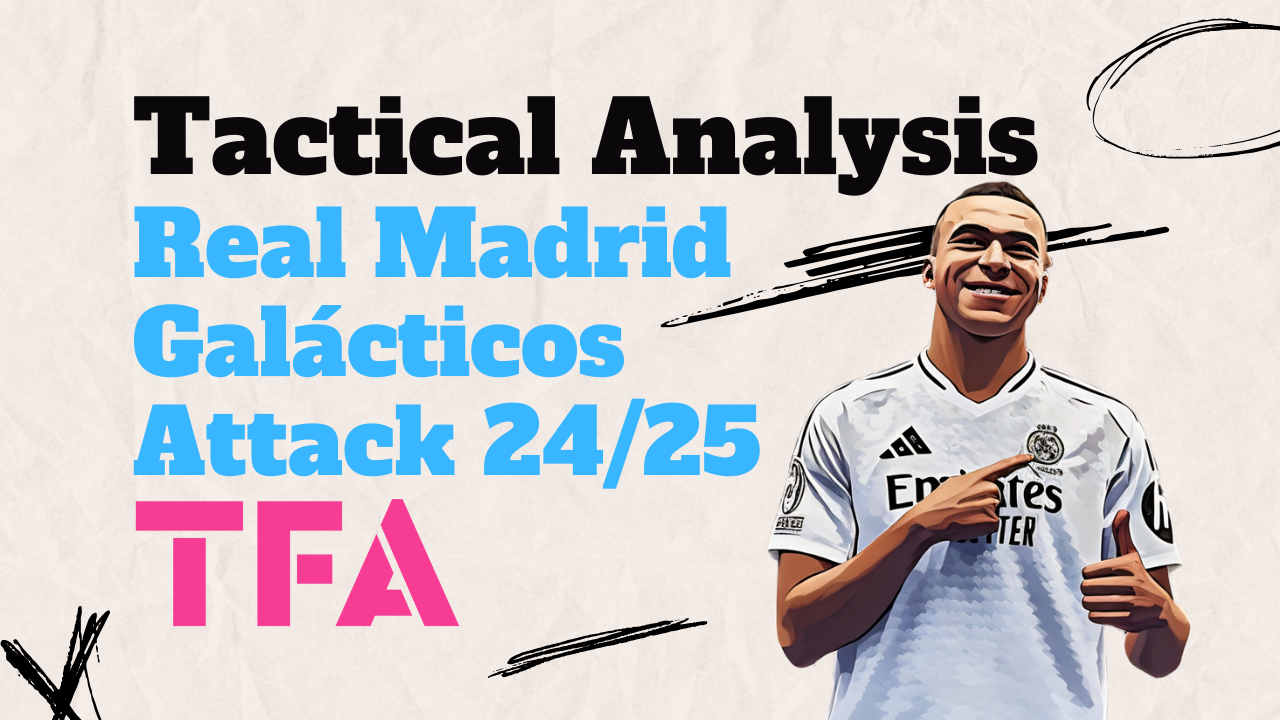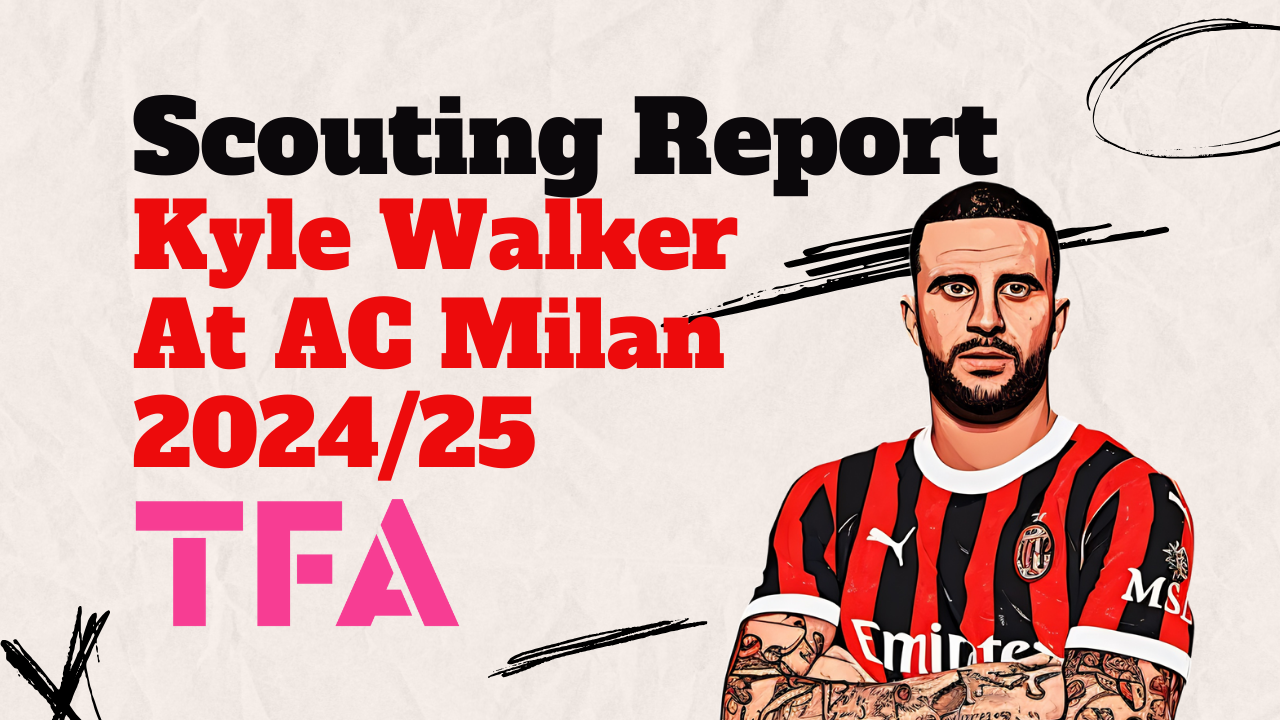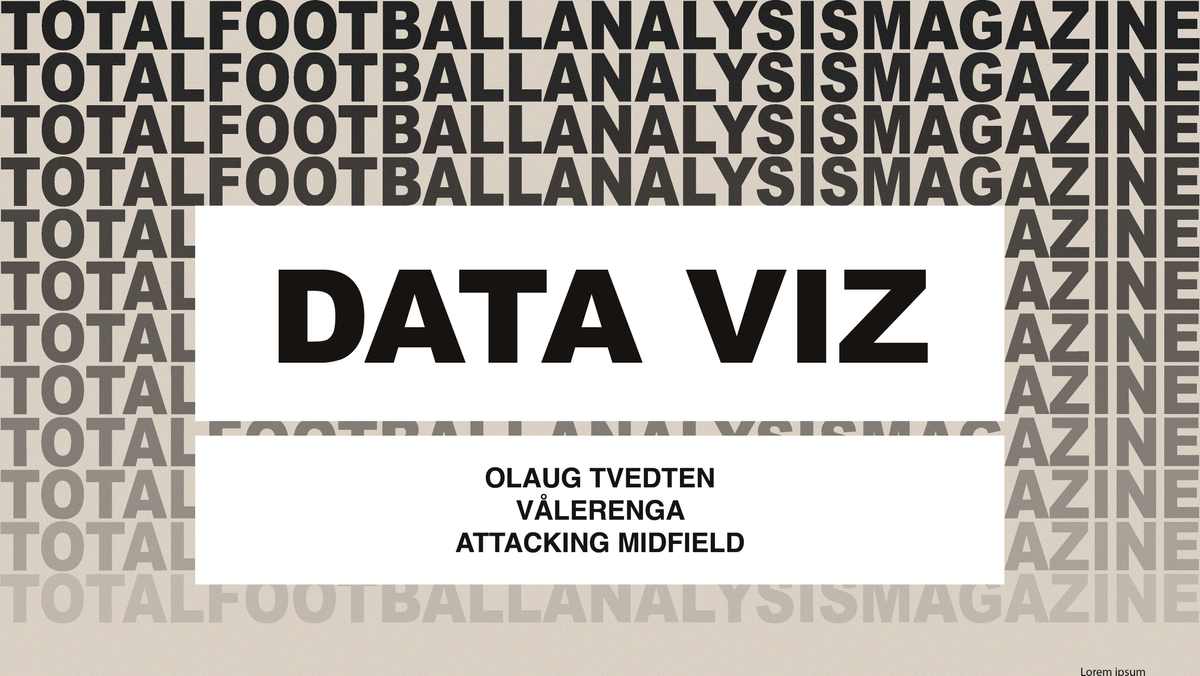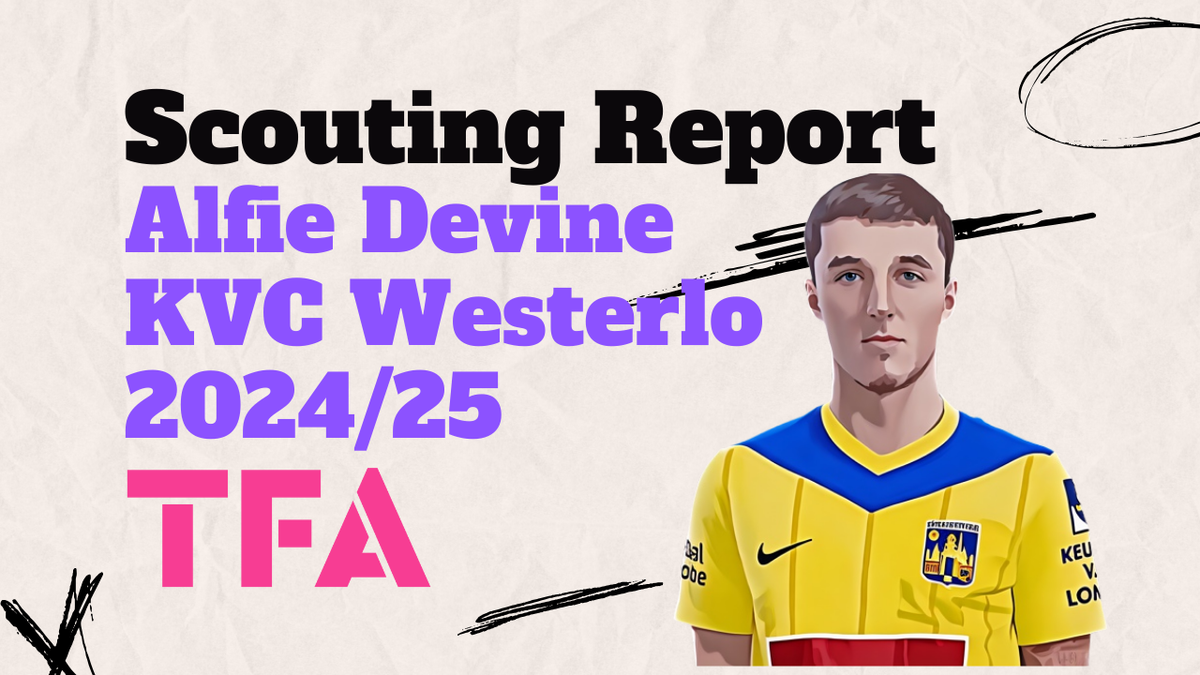It's a new era of the Galácticos for Real Madrid, with Kylian Mbappé, Vinícius Júnior, Rodrygo, and Jude Bellingham making up their attack, and the coach with the most UEFA Champions League titles ever, Carlo Ancelotti, guiding them.
Real Madrid had a rough start to the season offensively, with many of their star players not showing up every game or consistently getting on the scoresheet.
This includes Kylian Mbappé, who had a challenging start to his new career in Spain.
However, things are beginning to come together now.
Currently, they sit 16th in the UEFA Champions League standings, which has been quite a difficult campaign for them.
Yet, at the time of writing this, they are first in La Liga with 46 points, just two points ahead of Atlético Madrid in second place.
In this tactical analysis, we’ll examine how the attackers are blending together this season, putting up numbers, and how Carlo Ancelotti's tactics are helping them succeed.
Real Madrid Positions Out-Of-Possession
One of the main talking points hasn’t just been their scoring numbers but also how they blend defensively.
Who takes on what defensive duties? Who tracks back? Who positions themselves where and when off the ball?
We’ll look at examples of how Carlo Ancelotti likes to set up Real Madrid off the ball and assign defensive responsibilities to his attackers.

There are many ways to analyse Carlo Ancelotti's defensive setup with attacking and midfield players.
One common approach is a double pivot with three attackers in front of them and one more positioned ahead of those three.
This creates a structure that looks like a five-man midfield with one attacker at the very top.
The double-pivot centrally helps cover gaps, while the three-man line shifts from wing to wing to cover wide areas effectively.

The alternative setup still looks like a five-man midfield.
Still, sometimes Carlo Ancelotti style of play uses a single pivot with a four-man line in front of it, and once again, one attacker positioned ahead of the four-man line.
The key is taking turns deciding who the attacker at the very top is.
Usually, it’s Mbappé, but what makes them so dangerous on the counter is the speed of Vinícius, Rodrygo, and Mbappé.
If that second defensive line wins the ball, they’ll sprint toward your net before you can set up proper protection.
They don’t want to commit too many numbers forward and risk getting caught on the half-turn.
As a result, they often have Vinícius and Rodrygo drop back to the wings and line up alongside the midfielders.
This creates a more sitting-back defensive setup, allowing them to rely on their pace to launch counterattacks when the opportunity arises.
Real Madrid Tactics For Entering The Box
There are different zones for entering the final third.
In this section, we’ll analyse how they transition from midfield into the opponent’s box.

Real Madrid’s main attacking players, Kylian Mbappé, Jude Bellingham, Vinícius Júnior, and Rodrygo, all operate up front with relationism.
Real Madrid's attack has no set tactic or formula.
Carlo Ancelotti's coaching style likes to shift positions, cover different spaces, and mix things up.
All four are comfortable across the frontline and attacking zones, which works perfectly for Real Madrid.
Take a look at the image above: Mbappé is on the right wing, Vinícius and Rodrygo are playing as dual strikers, and Jude is positioned on the left wing.
But how does this relationism lead to their goals?

Take a look at their first goal against Red Bull Salzburg from their most recent game.
Once again, the players are not in their usual positions, but that’s exactly what leads to this goal.
Salzburg couldn’t settle into their defensive shape or man-mark the attacking players effectively because of the constant movement in and out of spaces and across the wings.
Suddenly, Jude Bellingham finds himself in the striker’s position and attempts a touch, which results in Rodrygo having an easy shot that finds the back of the net.
Just a few minutes earlier, in the earlier image above, we saw that it was Mbappé on the right instead of Rodrygo, and Jude was on the left rather than in the striker role.
This relationism is what threw off the opponents completely.
Real Madrid Tactics In The Final Third
Above, we looked at how Real Madrid's attack sets up for transitions from midfield to the attacking third.
Now, let’s focus on their attacking play when they’re in the final third.
Since Real Madrid has so many world-class attackers, with four main ones, teams often set up with low blocks and track back hard to end their dangerous attacks.
Every time a Real Madrid attacker is on the ball, it’s a potential chance to score, so opposing teams must act quickly to prevent it.
So, how can Real Madrid create space for their attackers when teams are sitting in low blocks and tracking back?
The answer lies in baiting vertical runs in the final third.

Notice Camavinga's fake run into the box.
There’s no chance for him to receive the ball in that position, but with this run, he’s dragging two opposing players with him.
So, who benefits from this?
The other attacker, who stays outside the box in open space, is Mbappé, in this case.
Now that the fake run has pulled two defenders away, Mbappé is free to take his space and run towards goal.
The only thing the defender can do is point at him, hoping one of his teammates will mark him, but it’s too late.
The fake run has done its job.

But the fake run doesn’t always have to happen right outside the box.
Another example from their most recent match was a fake run inside the box.
This time, there’s almost no chance the player can whip in a cross directly to Mbappé’s feet, as there are defenders in the way, and the goalkeeper can come out to catch the ball.
However, he doesn’t stay static and wait for the ball.
Instead, he makes the fake run forward, dragging two defenders with him.
So, who benefits from this fake run and the space it creates?
Rodrygo receives the cut-back pass and takes his chance.

Take a look at a moment from their Champions League match against AC Milan.
Notice the amount of defensive players on just three attackers from Real Madrid, with Mbappé on the right, which is not his main position.
But how can they break down Milan here?
By making those fake runs, Vinícius or Jude enter the box, creating more space on the edge of the box.
This allows the winger to penetrate and cut inside into that open space, exploiting the gaps in Milan’s defence.

What also makes them so dangerous is their pure chemistry.
Vinícius sees Mbappé making his run and immediately starts his own.
What makes their attack so effective is how in sync they are.
All their attackers are aware and looking for the right opportunities to mesh.
The over-the-head balls from the midfield is key for their fast-paced players, and their synchronisation is what makes them so dangerous.
They understand each other on the pitch like no other attacking group in the world.
Real Madrid Attacking Statistics
Now that we’ve looked at some of their in-game tactics, let’s look at the stats of their key players.
The player that arguably plays the most pivotal role is Jude Bellingham.
As the midfielder who plays as a 6, 8, or 10, he is the main player responsible for providing the front three with scoring opportunities.

With 4.65 xA and eight assists this season, we can see from Jude Bellingham's shot assists map just how important he is in the final pass into the box.
He provides passes to both sides of the box, not favouring just one side but equally playing both flanks.
Jude Bellingham's progressive passes map shows just how important he is in playing passes into the final third.
That map is filled with passes to both flanks, and we’re only midway through the season.
He plays a pivotal role in providing for the main attackers.

Viní Júnior’s penetrating carries map is insanely beautiful.
It’s filled with arrows that penetrate the penalty box.
Of course, you see more from the left flank, as that’s his natural position, but you can also see some progression into the box from the right side.
This is because he shifts to the right wing at times during the match as well to make room for Mbappé on the left side.

Kylian Mbappé's penetrating carries map is more diverse.
He often plays on both wings instead of just one like Vini Jr.
He helps initiate the transition into the box from both flanks.
His penetrating carries map is filled with him dribbling into the box, which is no surprise, given that he’s one of the best wingers on the planet.

Rodrygo’s ball progression map shows just how important he is in the transition of the attack, from build-up in midfield to helping with counterattacks.
His ball progression map is also very diverse, covering both flanks and even entering the striker area.
Contrary to most opinions, Rodrygo is a better tight-space dribbler than his teammates and arguably even the best in the world.
This is why he plays all around the pitch.
His tight-space dribbling is crucial in helping Madrid get out of tight situations.
Conclusion
Real Madrid sitting at the top of the table is no surprise.
The only surprise was how long it took for their attackers to blend together, as people expected such world-class players to click instantly.
However, it seems they’ve figured it out now.
They play with relationism up top, which is why their attack is so unpredictable.
The opponent can't analyse their game and prepare since they are always rotating in and out of each other's spaces.
With Ancelotti coaching these four young players, it’s a recipe for success for many years to come, even after he eventually leaves.
Their relationship and chemistry will only grow, potentially creating a dynasty the world of football has never seen.





Comments